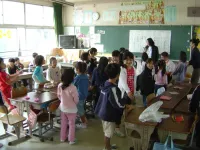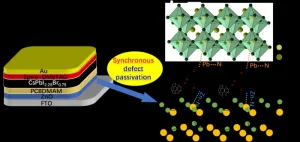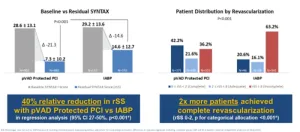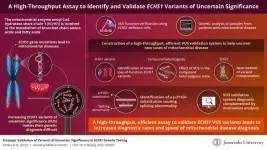(Press-News.org) (Santa Barbara, Calif.) — As society reckons with climate change, there’s a growing call to keep fossil fuels right where they are, in the ground. But the impact of curtailing oil production will depend on the policies we implement to achieve this.
An interdisciplinary team of researchers investigated the carbon emissions, labor and health implications of several policies to reduce oil extraction, with a special focus on how the effects vary across different communities in California. Their results, published in Nature Energy, illustrate the tradeoffs between different strategies. For instance, models banning oil extraction near communities produced greater health benefits across the state, but they also led to more job losses, with disadvantaged communities feeling about one third of both the costs and the benefits.
With a goal to reach carbon neutrality by 2045, California is currently implementing some of the world’s most ambitious climate policies. As the country’s seventh largest oil-producing state and the world’s fifth largest economy, California provides a unique setting to study supply-side decarbonization policies. It already has a carbon cap-and-trade program and is currently debating a setback policy that would ban new oil production near communities.
Many considerations
Petroleum production is a multifaceted endeavor. The greenhouse gas emissions from burning fossil fuels are the main driver of climate change. Extracting these resources also emits CO2 into the environment, in addition to air pollution and toxic substances. Any policies seeking to curb oil production will affect people for better and worse. The industry employed 25,000 Californians in 2019, and provides tax revenue to local governments. “Our analysis is trying to quantify what those tradeoffs look like as the state considers different policies,” said co-author Kyle Meng, an associate professor in UC Santa Barbara’s economics department and the Environmental Markets Lab (emLab) at the Bren School of Environmental Science & Management.
“We’re taking traditionally climate-focused policies and comparing them along local impacts, health benefits and employment costs,” added co-lead author Paige Weber, an environmental economist at UNC Chapel Hill, previously an emLab post-doc.
The authors developed a framework to analyze the impact of three policies: an excise tax (paid per barrel); a carbon tax (paid per ton emitted); and setbacks at 1000 feet, 2500 feet and 1 mile. Taxes increase the cost of production, curbing activity and driving down emissions. Setbacks essentially ban extraction in areas where people live. In a previous study, the authors found that production decreases because it might not be economical to drill somewhere else.
To compare between the policies, each setback distance had a corresponding excise and carbon tax level that achieved the same emissions target in 2045.
The authors started with a suite of models to predict oil production in California. Using historical data and economic theory, the team attempted to answer the following questions: Will they drill here? How much will a well produce? When will it shut down?
The researchers then modeled the health impacts of oil production emissions as they spread across California’s communities. Finally, they modeled the outcome that each policy would have on jobs and worker compensation. The authors were especially curious how these effects fell on people living in areas that meet California’s definition of a disadvantaged community.
They calibrated the health and labor consequences of each policy based on its ability to reduce carbon. “We ask, for the same greenhouse gas reduction, which policy has greater health benefits and fewer labor costs, and how are these benefits and costs distributed?” Meng explained.
Always a tradeoff
Setbacks offered the greatest air-quality improvements, especially to disadvantaged communities. If you move oil production away from where people live, they’ll see health benefits. But there was a surprising tradeoff. When oil production is close to communities, so are the jobs it offers. “The same communities that benefit from cleaner air are also those facing labor market consequences,” Meng said.
During policy discussions, there’s often disagreement between groups highlighting the health impact of oil production and those focused on the employment benefits. “They’re often pitched as separate camps,” Meng continued. “But our analysis shows that costs and benefits can be borne by the same communities.”
Carbon and excise taxes both work by raising production costs, but the two policies target different oilfields. An excise tax eliminates the most expensive operations first, and falls roughly in the middle in terms of job and health implications.
“The cheapest way to reduce greenhouse gas emissions would be with a carbon tax because it goes after the most carbon-intensive oil extractors first,” Weber said. But since it takes the smallest number of wells out of production per ton of carbon emissions reduced, a carbon tax offers the lowest total health benefits, while also leading to the lowest job losses.
The authors believe their estimates of the health impacts are conservative. They focused solely on premature mortality, as other health impacts are more difficult to quantify. As a result, any action will likely improve the health of Californians more than what the study lays out.
Similarly, the researchers expect they overestimated the labor impacts because their framework doesn’t account for the possibility of re-employment. It assumes that every job lost results in unemployment.
The path forward
By 2045, California aims to reduce emissions in the transportation sector by 90% compared with 2019. And the Golden State is looking to many policies to achieve this.
“It’s a hotly debated issue right now because the governor just signed a law banning new oil drilling near communities,” said co-lead author Ranjit Deshmukh, an assistant professor in UC Santa Barbara’s Environmental Studies Program. The oil industry quickly circumvented this action by collecting enough signatures to place a referendum on the next ballot.
“Unfortunately, even the largest setback distance did not reach the state’s greenhouse gas reduction target,” Weber said. “So, you’d need to combine a setback with another policy.”
The state currently has no plans to use an excise tax to reduce greenhouse gas emissions from oil extraction, the authors said. On the other hand, the state’s cap-and-trade program functions much like a carbon tax. The only difference is that the market finds a price based on the cap, rather than it being set by the government. That said, the cap-and-trade program spans many sectors in the state, not just fossil fuel extraction.
This paper captured employment and health impacts on a much finer resolution than previous studies. Looking at, say, county averages for health benefits can be misleading, the researchers explained. Consider Los Angeles county: There’s a lot of variation between people living in Compton and Hollywood, or Long Beach and Lancaster. “A much finer resolution analysis is needed to accurately answer the question of how different communities bear the costs or get the benefits of this oil phase-out,” Deshmukh said.
The empirical aspect of their framework was also an innovation. Most other studies used only engineering models to forecast production. Using detailed historical extraction data gave the authors more confidence in the accuracy of their projections.
The team has begun similar work investigating the health and labor impacts of phasing out oil refining in California. And they plan to extend their analysis on petroleum production to the rest of the country. They hope their work will guide policymakers towards an effective, equitable solution for curbing fossil fuel extraction. One that maximizes its benefits while reducing its drawbacks.
END
Keeping California’s oil in the ground will improve health but affect jobs
Researchers investigated the carbon emissions, labor and health implications of several policies to reduce oil extraction
2023-05-18
ELSE PRESS RELEASES FROM THIS DATE:
Biodiversity discovery: Unknown species ("dark taxa") drive insect diversity
2023-05-18
Biodiversity loss ranks among the top three risks to humanity, as stated in the 2023 World Economic Forum Global Risks Report. Understanding biodiversity's basic building blocks is essential to monitor changes, identify influencing factors, and implement appropriate policies. However, much of terrestrial animal diversity, including insects, remains unknown or "dark taxa."
For example, the global biodiversity information portal GBIF has nine times more information on birds than insects and arthropods, despite birds only accounting ...
Climate change to push species over abrupt tipping points
2023-05-18
Climate change is likely to abruptly push species over tipping points as their geographic ranges reach unforeseen temperatures, finds a new study led by a UCL researcher.
The new Nature Ecology & Evolution study predicts when and where climate change is likely to expose species across the globe to potentially dangerous temperatures.
The research team from UCL, University of Cape Town, University of Connecticut and University at Buffalo analysed data from over 35,000 species of animals (including mammals, amphibians, reptiles, birds, corals, fish, cephalopods and plankton) and seagrasses from every continent and ocean basin, alongside climate projections running up to 2100.
The ...
Engineering: The house that diapers built
2023-05-18
Up to eight percent of the sand in concrete and mortar used to make a single-story house could be replaced with shredded used disposable diapers without significantly diminishing their strength, according to a study published in Scientific Reports. The authors suggest that disposable diaper waste could be used as a construction material for low-cost housing in low- and middle-income countries.
Disposable diapers are usually manufactured from wood pulp, cotton, viscose rayon, and plastics such as polyester, polyethylene, and polypropylene. ...
Why do Japanese teachers seem unready to teach critical thinking in classrooms?
2023-05-18
Globally, critical thinking (CT) is regarded as a highly desirable cognitive skill that enables a person to question, analyze, and assess an idea or theory from multiple perspectives. CT has become an integral and mandatory part of global educational curricula, but its definition varies across contexts and cultural backgrounds.
To assess the implementation of CT, the Organization for Economic Cooperation and Development (OECD) conducts the Teaching and Learning International Survey (TALIS). In a 2018 survey (TALIS 2018), only 12.6% of lower secondary ...
Boosting solar cell energy capture efficiency with a fullerene-derivative interlayer
2023-05-18
Solar cells are a critical component to the transition to renewable energy sources, and enhanced power conversion efficiency (PCE), or amount of power captured with a given amount of sunlight, increases the practicality of solar power in a society with high energy demands. Perovskite solar cells that use all-inorganic perovskite light-absorbing materials are more thermally stable than organic-inorganic hybrid counterparts, but suffer from lower PCE. Researchers have overcome this hurdle in all-inorganic perovskite solar cells ...
Children’s Cancer Research Fund backs cutting-edge leukemia research at UVA
2023-05-18
Children’s Cancer Research Fund has awarded $250,000 to an innovative new approach to treating leukemia – blood cancer – being developed at UVA Cancer Center.
The grant to John H. Bushweller, PhD, of the University of Virginia School of Medicine, is part of the national nonprofit’s efforts to accelerate the development of new and better treatments for difficult-to-treat cancers.
“This funding makes it possible to continue developing a novel approach to treatment for a form of pediatric leukemia with a very poor prognosis,” said Bushweller, of UVA’s Department of Molecular Physiology and Biological Physics. “For ...
Research to improve quality of stroke care is advancing but gaps exist
2023-05-18
INDIANAPOLIS – Every 40 seconds, someone in the U.S. has a stroke. Every 3.5 minutes, someone in the U.S. dies of a stroke. Stroke patients have multifaceted needs, requiring complicated care delivered by multidisciplinary teams.
In the journal Stroke’s annual review of quality improvement advances in stroke care studies, Regenstrief Institute Research Scientist Dawn Bravata, M.D., and colleagues update researchers, clinicians and healthcare administrators on advances in the field, highlighting the challenges of scalability and sustainability.
“Quality improvement exists to ensure that every patient with stroke or at risk of stroke is getting the care ...
High-temperature shock synthesis of high-entropy alloy nanoparticles for catalysis
2023-05-18
High-temperature shock (HTS) is an emerging synthesis method with kinetics-dominated non-equilibrium characteristics, which can achieve an ultrafast heating/cooling rate of ~10^5 K/s and a peak temperature larger than ~3000 K within a time scale of seconds or milliseconds, and is widely used in the preparation of high entropy content, thermodynamic metastable phase and defect-rich materials. Amongst these significant advances, nanoscale high entropy alloys (HEA) are particularly prominent in heterogeneous catalytic reactions with remarkable ...
Analysis showcases potential for more complete revascularizations with Impella compared to IABP during HRPCI
2023-05-18
DANVERS, Mass., May 18, 2023 – Abiomed, part of Johnson & Johnson MedTech[1], announces results of a third-party analysis showing that utilizing Impella during high-risk percutaneous coronary intervention (PCI) procedures may help physicians achieve a more complete revascularization compared to high-risk PCIs supported using an intra-aortic balloon pump (IABP). Previous studies have shown that a more complete revascularization can lead to longer survival[2],[3], a greater reduction in heart failure and angina symptoms[4], and an improved quality of life for the patient[5].
This analysis shows ...
Novel high-efficiency assay promises rapid mitochondrial disease diagnosis
2023-05-18
The gene ECHS1 encodes for enoyl-CoA hydratase short-chain 1, a mitochondrial enzyme involved in branched-chain amino acid and fatty acid metabolism. Rare inherited mutations in the ECHS1 lead to mitochondrial ECHS1 deficiency, resulting in the disruption of the metabolism of the essential amino acid valine and accumulation of valine intermediates.
In fact, ECHS1 is one of the most common causative genes of mitochondrial diseases. These mutant enzymes also cause brain lesions and severe delays in a child’s psychomotor development, along with elevating blood lactate levels. ECHS1 variants have been reported globally, and many disease-causing ...
LAST 30 PRESS RELEASES:
Numbers in our sights affect how we perceive space
SIMJ announces global collaborative book project in commemoration of its 75th anniversary
Air pollution exposure and birth weight
Obstructive sleep apnea risk and mental health conditions among older adults
How talking slows eye movements behind the wheel
The Ceramic Society of Japan’s Oxoate Ceramics Research Association launches new international book project
Heart-brain connection: international study reveals the role of the vagus nerve in keeping the heart young
Researchers identify Rb1 as a predictive biomarker for a new therapeutic strategy in some breast cancers
Survey reveals ethical gaps slowing AI adoption in pediatric surgery
Stimulant ADHD medications work differently than thought
AI overestimates how smart people are, according to HSE economists
HSE researchers create genome-wide map of quadruplexes
Scientists boost cell "powerhouses" to burn more calories
Automatic label checking: The missing step in making reliable medical AI
Low daily alcohol intake linked to 50% heightened mouth cancer risk in India
American Meteorological Society announces Rick Spinrad as 2026 President-Elect
Biomass-based carbon capture spotlighted in newly released global climate webinar recording
Illuminating invisible nano pollutants: advanced bioimaging tracks the full journey of emerging nanoscale contaminants in living systems
How does age affect recovery from spinal cord injury?
Novel AI tool offers prognosis for patients with head and neck cancer
Fathers’ microplastic exposure tied to their children’s metabolic problems
Research validates laboratory model for studying high-grade serous ovarian cancer
SIR 2026 delivers transformative breakthroughs in minimally invasive medicine to improve patient care
Stem Cell Reports most downloaded papers of 2025 highlight the breadth and impact of stem cell research
Oxford-led study estimates NHS spends around 3% of its primary and secondary care budget on the health impacts of heat and cold in England
A researcher’s long quest leads to a smart composite breakthrough
Urban wild bees act as “microbial sensors” of city health.
New study finds where you live affects recovery after a hip fracture
Forecasting the impact of fully automated vehicle adoption on US road traffic injuries
Alcohol-related hospitalizations from 2016 to 2022
[Press-News.org] Keeping California’s oil in the ground will improve health but affect jobsResearchers investigated the carbon emissions, labor and health implications of several policies to reduce oil extraction





